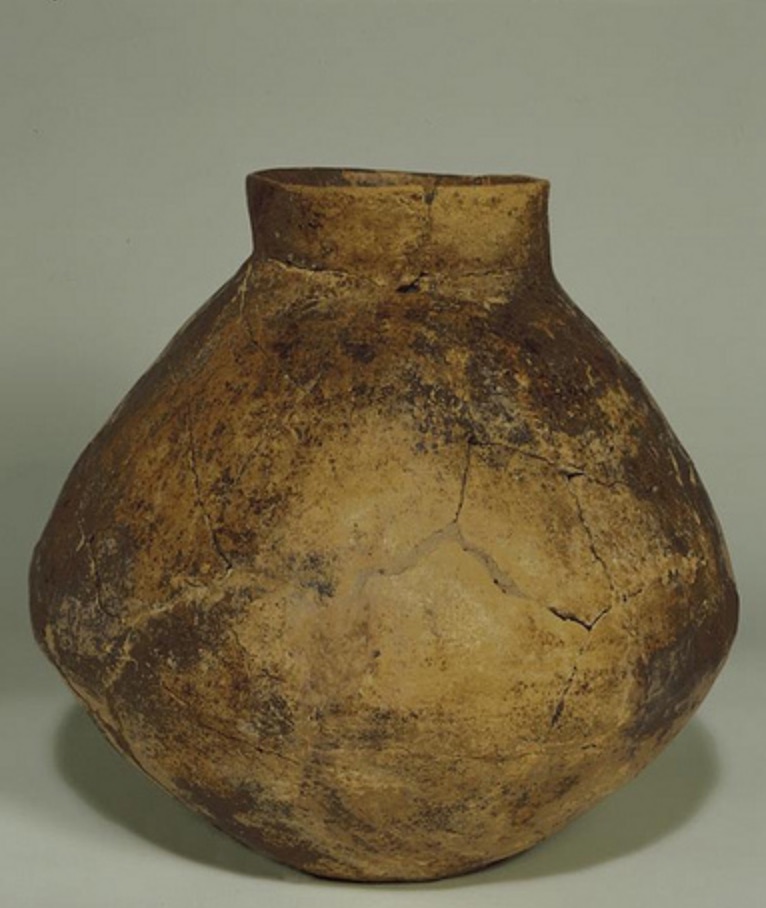The article below by Mark Berkowitz entitled “World’s Earliest Wine” was printed in Archaeology: A Publication of the Archaeological Institute of America (Volume 49 Number 5, September/October 1996).
===============================================================
Residue on a potsherd dating to the time of the first permanent settlements in the Middle East suggests that wine-making began 2,000 years earlier than previously thought. The sherd, ca. 7,000 years old, came from one of six two-and-one-half-gallon jars excavated two decades ago from the kitchen area of a mud-brick building in Hajji Firuz Tepe, a Neolithic village in Iran’s northern Zagros Mountains. Using infrared spectrometry, liquid chromatography, and a wet chemical test, Patrick E. McGovern and a team from the University of Pennsylvania Museum found calcium salt from tartaric acid, which occurs naturally in large amounts only in grapes. Resin from the terebinth tree was also present, presumably used as a preservative, indicating that the wine was deliberately made and did not result from the unintentional fermentation of grape juice.

Originally discovered at a Neolithic village site in Iran, this jar was one of six vessels containing the remains of 7,000-year-old wine (Source: Archaeology.org and The University of Pennsylvania Museum). As noted by Amy Ellsworth of the University of Pennsylvania Museum page (July 18, 2012):
“The practice of wine-making or viniculture can be traced back to the Neolithic period, 7,000 years ago when the first Eurasian grape vines were domesticated for this purpose. This “Wine Jar” was found at Hasanlu in Hajji Firuz, Iran. It has been reconstructed from multiple fragments. The jar is one of a series of jars found sunken into the floor along an interior wall of a “kitchen” in a well-preserved Neolithic house at HF Tepe in North West Iran. The jar had a capacity of approximately 9 liters (2.5 gallons). It is the oldest known wine storage container in the world. Analyses of the two jars in the Penn Museum showed that they had contained a resinated wine or “retsina,” i.e., with terebinth tree or pine resin added as a preservative and medical agent. There was a red to go with the white wine, based on the colors of the residues.”
Analysis of the Hajji Firuz Tepe sherd comes in the wake of two other recent discoveries of early wine-making in this region where grapes grow in the wild. Residue from a jar from Godin Tepe, in the nearby middle Zagros Mountains, was dated to 5,100 years ago, until now the earliest evidence of wine-making. Grape presses dating to the late third millennium B.C. have been found at Titris Höyük in southeastern Turkey.
A video of the lecture provided at Cambridge University by Professor Dariush Borbor on the history of wine in Iran. Professor Borbor also delivered a lecture in Vienna at the conference entitled “Wine culture in Iran and neighbouring countries” at the Institute of Iranian studies, Austrian Academy of Sciences in the 16th to 17th of September 2010. He also delivered a lecture entitled “Wine Culture in Architecture in Iran” at the University of Edinburgh on the 4th of February 2013. Professor Borbor’s 2010 lecture paper and the conference program in Vienna was subsequently published in the academic textbook by the Austrian Academy of Sciences Press entitled “Wine Culture in Iran and beyond” (edited by Bert G. Fragner, Ralph Kauz and Florian Schwarz) (2014). Professor Borbor will soon be releasing his work “a Catalogue of Material Wine Culture in the Ancient Near East and Iran”.



